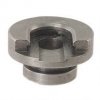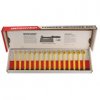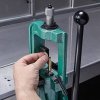ricksengines
Sako-addicted
Hi Chris
I appreciate the input. That said I am a bit paranoid when it comes to bullet jump. While Barnes recommends it for certain bullet types that they manufacture, I am more concerned about throat erosion and accuracy improvements when jump is virtually eliminated.
rick
I appreciate the input. That said I am a bit paranoid when it comes to bullet jump. While Barnes recommends it for certain bullet types that they manufacture, I am more concerned about throat erosion and accuracy improvements when jump is virtually eliminated.
rick





































